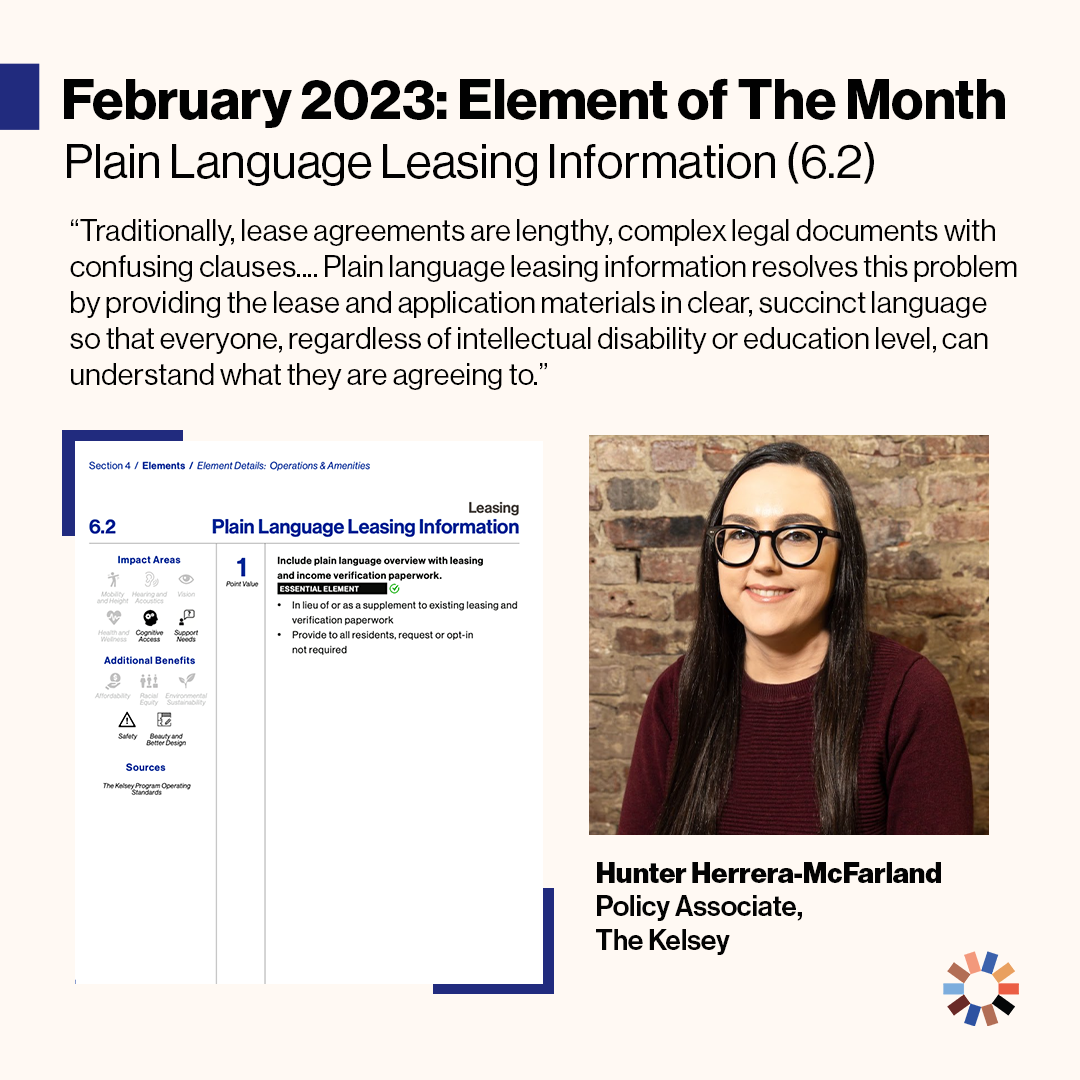The Housing Design Standards for Accessibility and Inclusion equip designers, builders, and developers with guidelines and frameworks for disability-forward housing creation. It highlights cross-disability accessibility and design decisions that are anchored in inclusion. Each month, we feature one of our partners and the Element they’re most excited about.
Name / Affiliation: Hunter Herrera-McFarland / Policy Associate / The Kelsey

We are thrilled to introduce the newest addition to our Policy team, Hunter Herrera-McFarland.
She is based in Washington state and has hit the ground running with contributions to federal legislation that supports affordable, accessible and inclusive housing for people with and without disabilities. Her favorite element is one that ensures every resident has an easy-to-understand lease. With “Plain Language Leasing Information,” all residents, regardless of disability or education level, have access to direct, clear and succinct language in both the leasing agreement as well as income verification.
Name of Element: Plain Language Leasing Information (6.2)
ESSENTIAL ELEMENT: Include plain language overview with leasing and income verification paperwork.
- In lieu of or as a supplement to existing leasing and verification paperwork
- Provide to all residents, request or opt-in not required
Design Category: Operations & Amenities
Impact Area(s): Cognitive Access, Support Needs
Additional Benefit(s): Affordability, Racial Equity
Why is this element important to you, personally or for the project?
Leasing information is essential to a tenant-landlord relationship where the landlord holds the majority of the power for the tenant to understand the terms of the lease agreement and the application process. Traditionally, lease agreements are lengthy, complex legal documents with confusing clauses. Limited housing options lead to most people signing them without completely understanding the rules. This is exacerbated by the fact that the housing available to people with disabilities and low-income housing is even more limited. Plain language leasing information resolves this problem by providing the lease and application materials in clear, succinct language so that everyone, regardless of intellectual disability or education level, can understand what they are agreeing to.
What recommendations would you make to someone designing a disability-forward housing project (related to the design standards)?
I would recommend that a disability-forward housing project conduct focus groups composed of people with and without disabilities and of varying education levels after they draft their plain language leasing information to ensure that everyone can understand what it says. If anyone in the focus group finds language confusing or believes that something could be rephrased for clarity, then the housing provider should gather feedback on how it could be improved and rewrite it.
